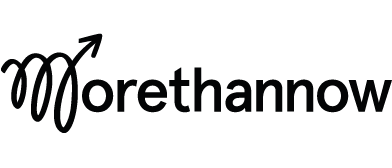Diversity and Inclusion at Ericsson: a Behavioural Science Story
In Q4 2021, Ericsson presented a new 3-year D&I strategy to their executive team.
It was underpinned by a single commitment:
“Evidence-based and enabled by behavioural science”
Two months later, Ericsson were the first organisation to sign up to MoreThanNow’s academic collaboration with world-leading researchers, Professors Iris Bohnet, Oliver Hauser and Edward Chang. They committed to multiple randomised controlled experiments to improve their inclusive culture, de-bias their people decisions, and critically, contribute to our collective understanding of ‘what works’ by engaging with the scientific community.
This transition - to an academic standard of intervention design and evaluation in the midst of mounting concern about traditional D&I practices – did not just happen. It was the culmination of a three-year journey between MoreThanNow and Ericsson that it feels time to share.
Back to the beginning: Thinking small in 2019/20
In 2019, we stumbled into a conversation with a new leadership team formed to drive D&I at Ericsson. They were interested in the potential of behavioural science and were particularly excited by some of our early experimental work at Transport for London. They jumped straight into the deep end by attending our 3-day behavioural science programme. It’s an intense course but the takeaway is simple:
“The evidence for changing behaviour with engagement campaigns and diversity training is weak. Instead, we should focus on everyday actions, intervene in-the-moment, and robustly test the impact of our work.”
Ericsson at The Lab, 2019
We were taken back by the ambition of the Ericsson team to operationalise this thinking. Within a month, we had set up a MoreThanNow Lab with a team of 20 from Ericsson, including member of the Executive Team Jan Karlsson, who joined us at the end of the day. The purpose of The Lab is to break down a challenge like inclusion into themes (like hiring, performance management, leadership and inclusive meetings), identify priority decisions and behaviours within those themes, and then design interventions to change them for the better.
As exciting as The Lab can be, it’s really just a start. Together with the teams involved, we still need to execute the ideas and put them under the spotlight of a completely new standard of evaluation: the randomised controlled experiment. This formed our focus for the year ahead.
Test and learn in 2020/21
A portfolio of five experiments emerged from The Lab, aimed at inclusive talent attraction, internal mobility, leadership succession, management pipeline and performance management. In each, Ericsson had identified precise ways in which they wanted either debias decisions or redesign inclusive experiences.
Let’s take our simplest experiment as an example of our research. When tackling a gender imbalance in internal mobility, we wondered whether the way roles were promoted to existing employees made a difference to application rates. We designed four messages that we hypothesized could make difference - based on existing academic literature - and randomly allocated these to 13,000 employees:
Simple: would you like to apply to these roles?
Confidence: …you don’t have to be 100% qualified to explore these opportunities.
Social norms: …join thousands of colleagues who move around our business every year, and explore these opportunities.
Role model: …(alongside a supportive message from a female leader who had a history of internal mobility).
Interest in internal mobility by message
This experiment was built around a single sentence, but for women, we still saw a 10% percentage point, or 43% increase in effectiveness between the lowest and highest performing message. It’s telling that there was evidence to suggest all these messages might have had a positive impact. But at Ericsson, both the social norms and role model message would have made the gender imbalance significantly worse. It was a great reminder of the importance of humility and experimentation when thinking about diversity interventions. Put simply, we’ll only know what works when we test it.
Now, no one is saying that the roll-out of an inclusive mobility message will solve gender equality. The point of thinking small is not to make giant leaps. It’s to do many things, grounded in the everyday, that accumulate over time. Four other experiments were already running at Ericsson and this was just the beginning. When we put together the findings in mid-2021, it led us to impact at scale and bigger ambitions for 2022 and beyond.
SCALING UP in 2021/22
I’m keen to tell you about our flagship performance research at Ericsson - two sequential randomised controlled experiments across 2020 (n=13000) and 2021 (n= 90000) and the lowest gender gap in Ericsson’s performance management programme since data collection began. But we’ll need to leave that until our academic partners have completed their independent analysis.
However, the nature of that work indicates where we’re heading next. We continue to train teams on applied behavioural science, run experiments at divisional level, and scale them for whole-organisation impact when we find a positive effect. At this stage in our relationship, it’s translating to measurable change across Ericsson. And the experimental nature of our research means that we can connect that progress back to the work we’ve done together.
Things only get more exciting from here. As Ericsson’s commitment to D&I progresses, so too does the ambition and scale of our experimental research. This is what led to our latest and most ambitious academic collaboration targeted at D&I’s most pressing questions. It means even more opportunity to break ground in what we know and understand about equality at work.
There are far too many people to thank at Ericsson for their commitment to this journey. A special shout out to Rosario Saud, Paola Agustini, Emma Birchall, Lourdes Pantaleon, Natalia Farfan Santos, Alfredo Nisay III, Jennyvee Dimaano and Debbie May Garchitorena. And to our executive sponsors, Jan Karlsson, MajBritt Arfert, Arun Bansal, Selina Millstam, Kevin Marcellus and Marie Danielsson.


